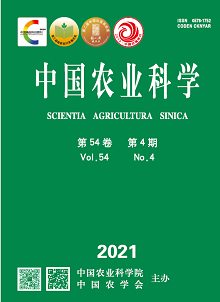【Objective】As one of the most destructive wheat diseases in the world, stripe rust is an airborne fungal disease caused by fungus Puccinia striiformis. f. sp. Tritici, (Pst). Breeding resistant cultivars by exploiting resistant genetic resources is the most economical and effective strategy to combat the rusts. To provide theoretical basis for the management of wheat stripe rust by identifying and evaluating the resistance level of Yunnan wheat landraces to the current predominant races of the pathogen, and synthetically screened resistance genes that may be carried in the tested materials. 【Method】In this study, 243 wheat landraces originated from Yunnan were inoculated with two highly toxic and prevalent stripe rust races CYR32 and CYR34 at seedling stage. At the adult plant stage of wheat, the mixture of the current predominant races of CYR32, CYR33, CYR34, and Guinong Pathogenic group was used as the inoculums to test the resistance of the tested wheat. The wheat landraces were screened with the molecular markers closely linked to known stripe rust resistance genes Yr5, Yr10, Yr15, Yr18, Yr26, Yr28, Yr29, Yr30, Yr36, Yr39, Yr41, Yr48, Yr65, Yr67, Yr80, and Yr81.【Result】The results showed that the 243 of the tested wheat materials, of which 18 were resistant to CYR32, 32 resistant to CYR34, and only 8 (3.29%) were resistant to both races at the seedling stage. Based on identification results of the seedling stage and the adult plant stage, 174 (71.6%) exhibited adult plant resistance, of which 105 were high resistance to stripe rust. The results of molecular detection indicated that 48, 44, 4, 6, 4, and 101 out of the 243 tested wheat materials carried the resistance genes Yr10, Yr18, Yr29, Yr30, Yr65, and Yr81, respectively. There were 34, 4 and, 1 simultaneously carrying 2, 3, and 4 resistance genes, respectively. Yr5, Yr15, Yr26, Yr28, Yr36, Yr39, Yr41, Yr48, Yr67, and Yr80 were not detectable in all of the wheat landraces. In addition, 74 landraces not detected any of the 16 resistance genes mentioned the above, and 58 exhibited adult plant resistance, which, presumably, may carry other known or new resistance genes to wheat stripe rust.【Conclusion】As a special wheat germplasm resource in China, Yunnan wheat landraces have excellent resistance to stripe rust. This study determined that resistance of the 243 tested wheat landraces to the current predominant races of the pathogen was high on the whole, and 174 wheat landraces with stable resistance were identified. Among them, 74 lines might carry other known or new resistance genes to wheat stripe rust, which could be used as parents’ sources for further exploration of new stripe rust resistance genes or QTL.









